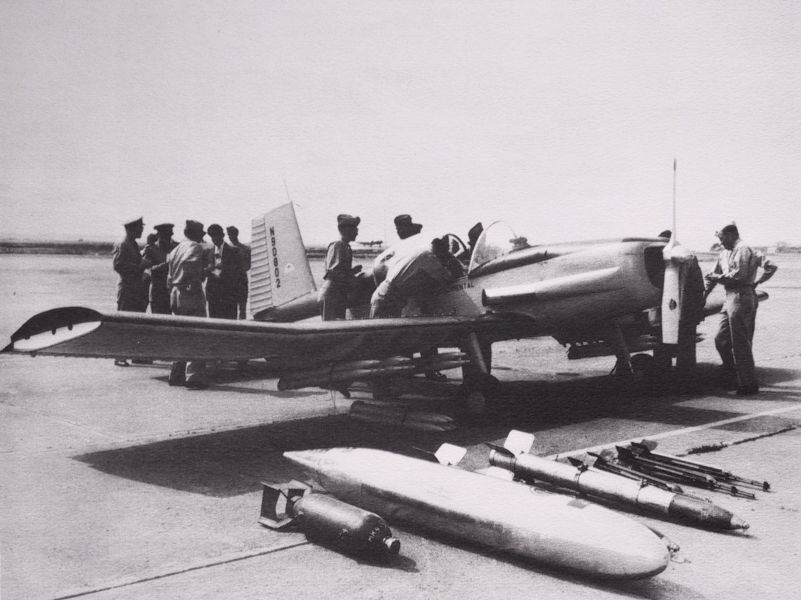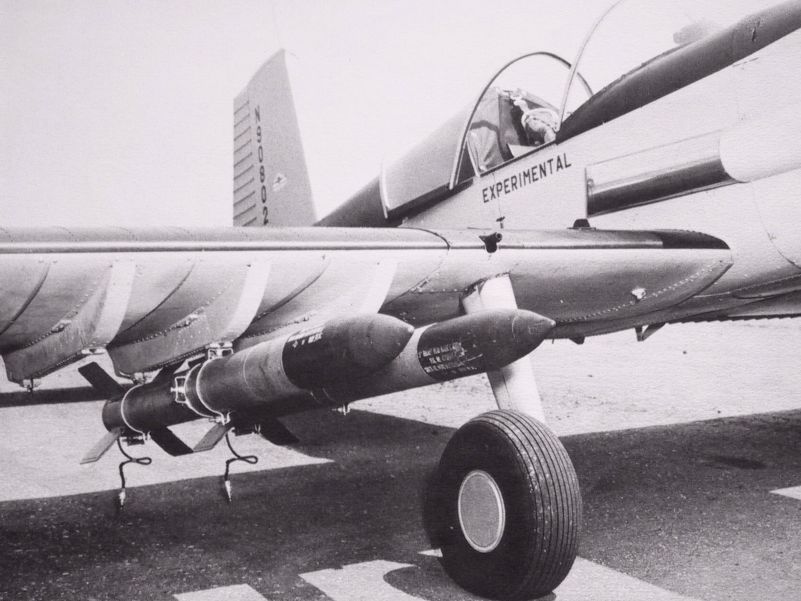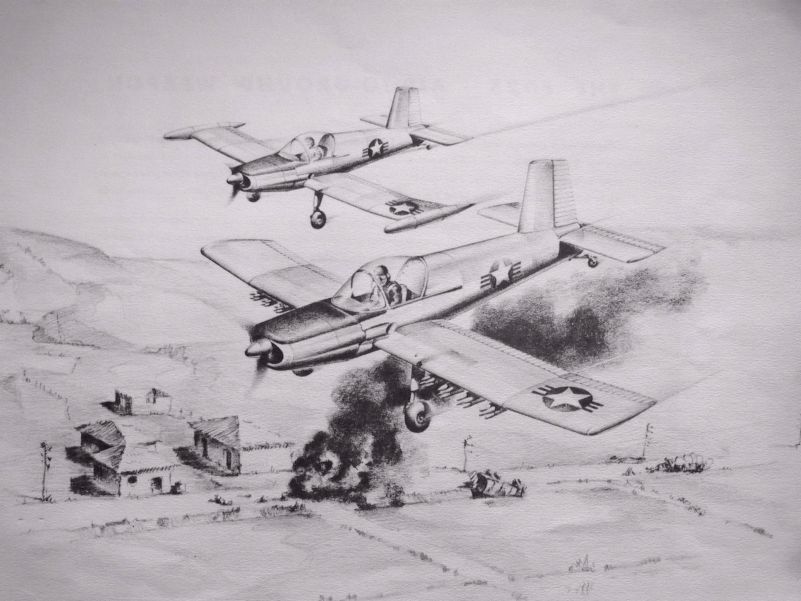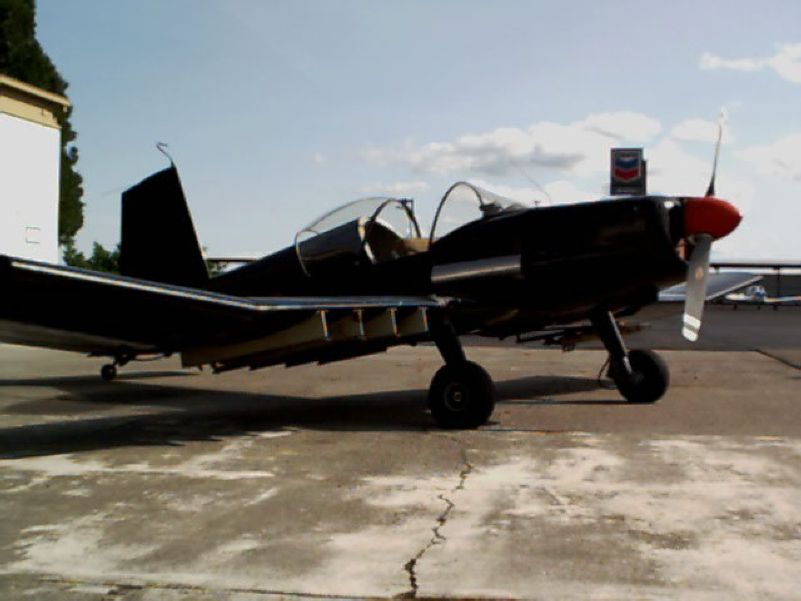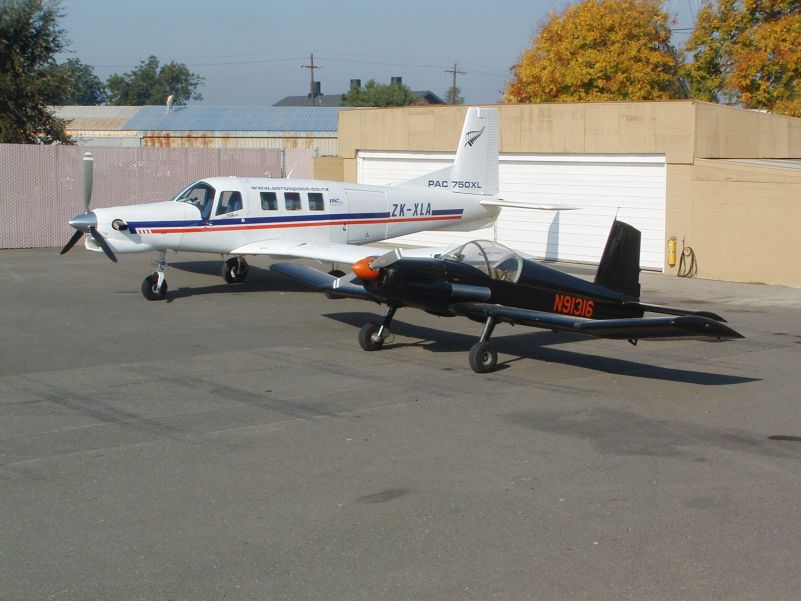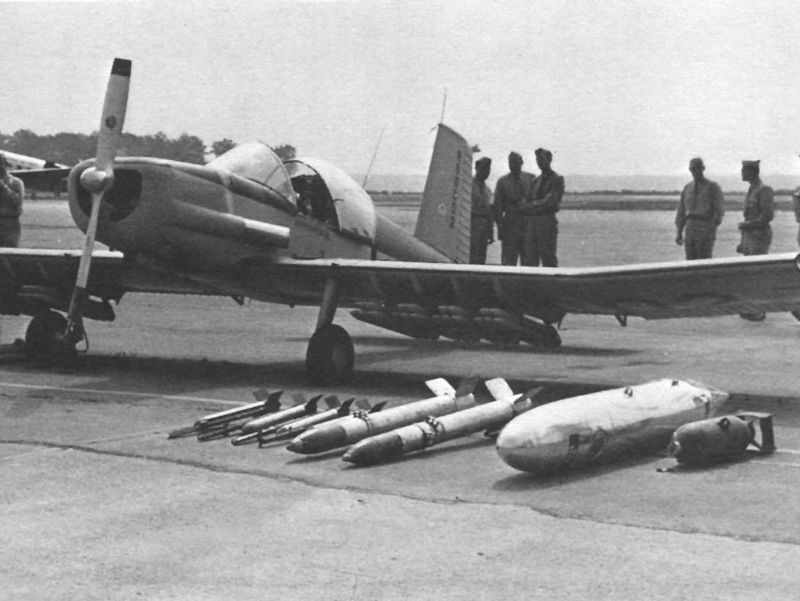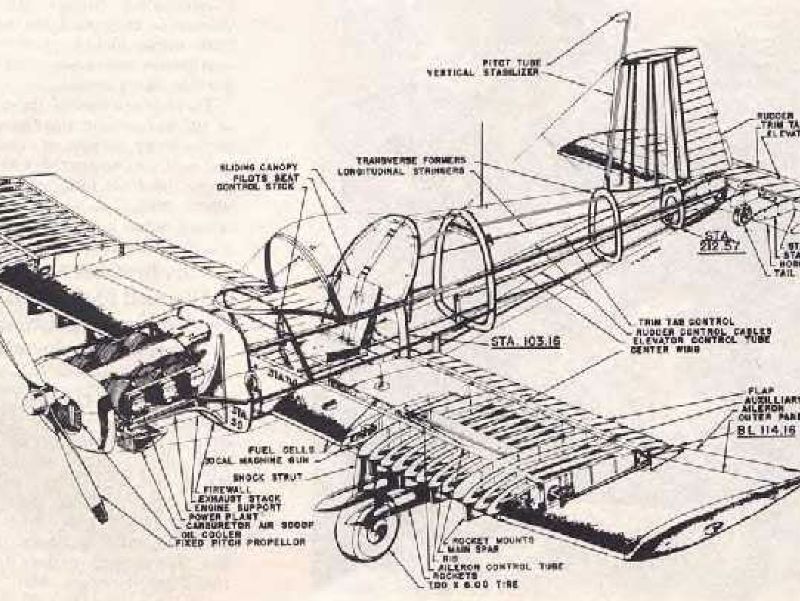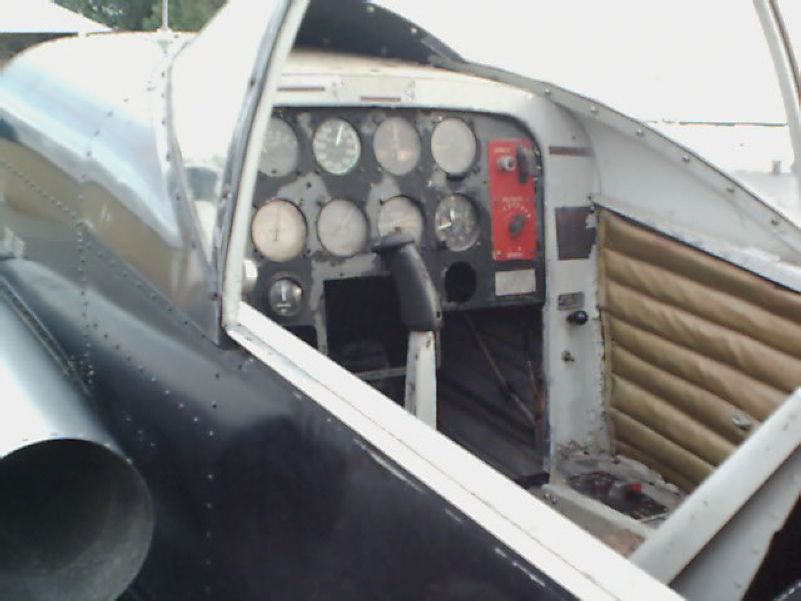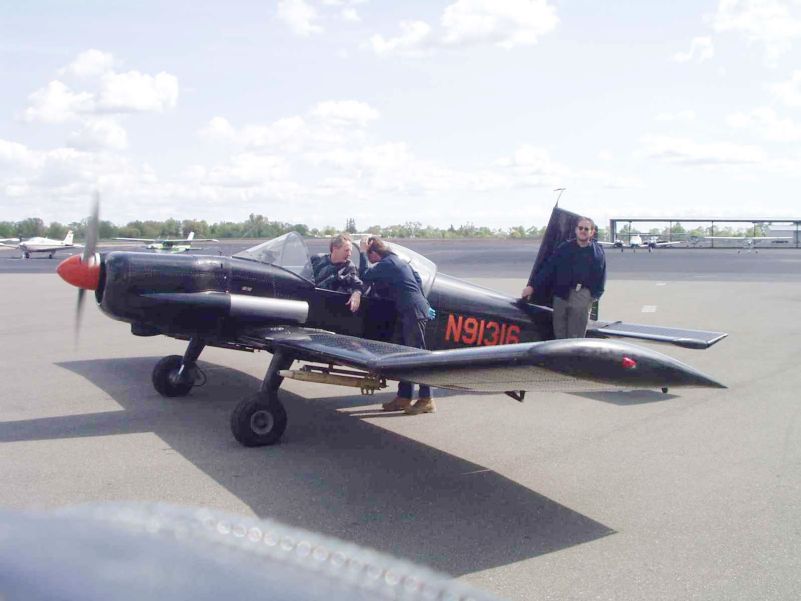Fletcher FU-25 Defender
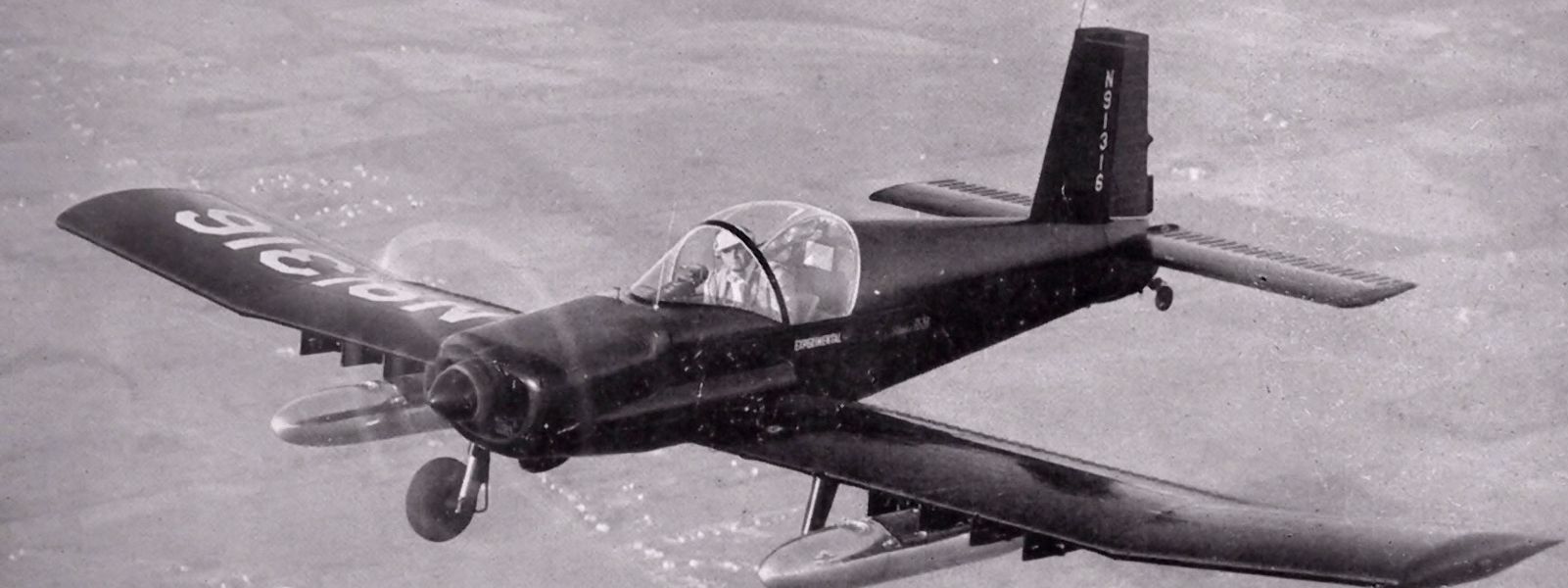
A relatively unknown "brother" of the FU-24 the Fletcher FD-25 Defender first flew in 1951.
Developed by the Fletcher brothers and John Thorp it was aimed at a perceived need in the US armed forces for a cheap and lightweight counter insurgency (COIN) attack aircraft.
The single seat and sole model FD25, manufactured from magnesium rather than aluminium, was followed in 1952 by the dual seat FD25A and then the definitive single seat FD25B, manufactured from aluminium.
The FD25A crashed during flight trials in 1952, killing several Fletcher employees, whilst the FD25B undertook very successful demonstrations with the US armed forces. The FD25B was a performer and was enthusiastically supported by US military personnel but unfortunately received no US Government support. Thus a great COIN aircraft was virtually still born.
The FD25B armament consisted of a pair of wing mounted racks for two 33-gallon napalm tanks. Additionally two 250 lb. fragmentation bombs and up to 40 2.75 inch folding fin air rockets of four 5.0 inch heavy rockets or twenty 80 mm Oerliken rockets could be fitted.
Fletched ceased production after three examples to then concentrate on the development of the FU-24. However, further FD25 production was undertaken under license in Japan by the Toyo Aircraft company.
The first Toyo example, a FD25B, was flown in March, 1953 and soon after sales of four FD25A and four FD25B were made to the Royal Cambodian Air Force. These were followed by an unclear number, possibly two each FD25A and FD25B, to the North Vietnamese Air Force. The fate of these airframes is unknown.
There is one of these aircraft restored in California, USA as shown in the images below.

